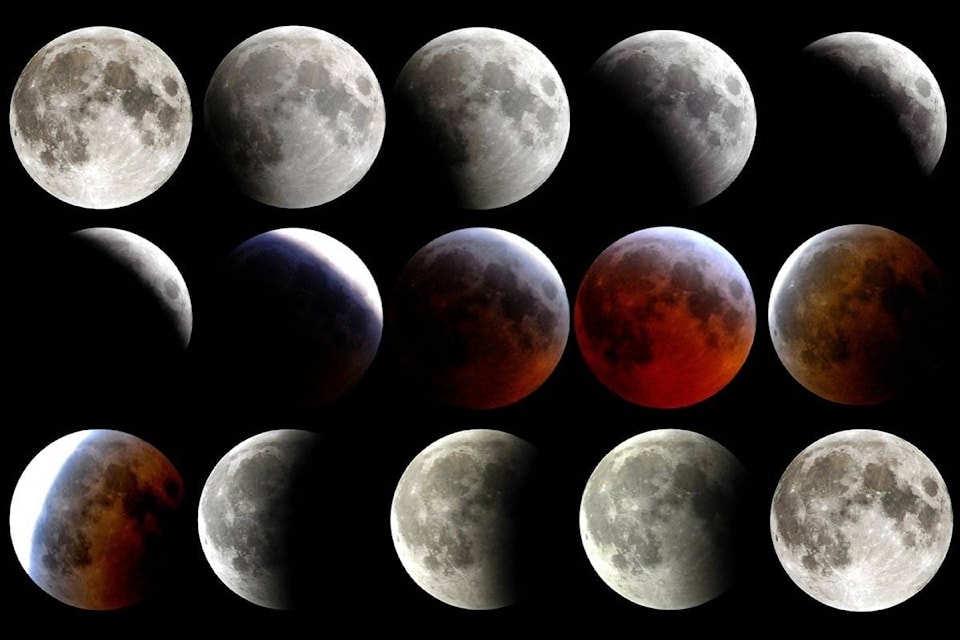A total lunar eclipse is a relatively rare event, but much of the world—including the southern B.C. Interior—will have an opportunity to see one on the night of January 20/21, 2019. All of North America has a front row seat and will witness the entire eclipse, and west coast residents will have the bonus of not having to stay up late to witness it.
An eclipse occurs when the Sun, Earth, and Moon are in perfect alignment. It’s a rare event, because the Earth’s moon has a slight incline in its orbit, which means it usually misses being completely in the Earth’s shadow.
In a lunar eclipse, the full moon slides into the shadow of the Earth (during a solar eclipse, the Moon passes between the Earth and the Sun and blocks the latter). While special eye protection is needed to safely view a solar eclipse, no such protection is needed during a lunar eclipse.
The period of time when the Moon is completely within the Earth’s shadow is called totality. During totality, the Moon’s surface turns a coppery-orange colour, because of sunlight refracting through the Earth’s atmosphere. For this reason, a total lunar eclipse is sometimes called a blood moon (if you were looking at the Earth from the Moon, our planet would have an orange ring around it).
In our area, the eclipse will start at 6:36 p.m. (all times Pacific) on Sunday, Jan. 20, when the Earth’s penumbra will start to touch the Moon’s face. The partial eclipse begins at 7:33 p.m., with viewers noticing the Moon beginning to turn red. The total eclipse begins at 8:41 p.m., with the Moon turning completely red, and the maximum eclipse—when the Moon is closest to the centre of the shadow—occurs at 9:12 p.m. The total eclipse ends at 9:43 p.m., and the partial eclipse—when the Moon completely exits the shadow—ends at 10:50 p.m.
The next total lunar eclipse visible in the Southern Interior will be on May 26, 2021.
editorial@accjournal.ca
Like us on Facebook and follow us on Twitter
